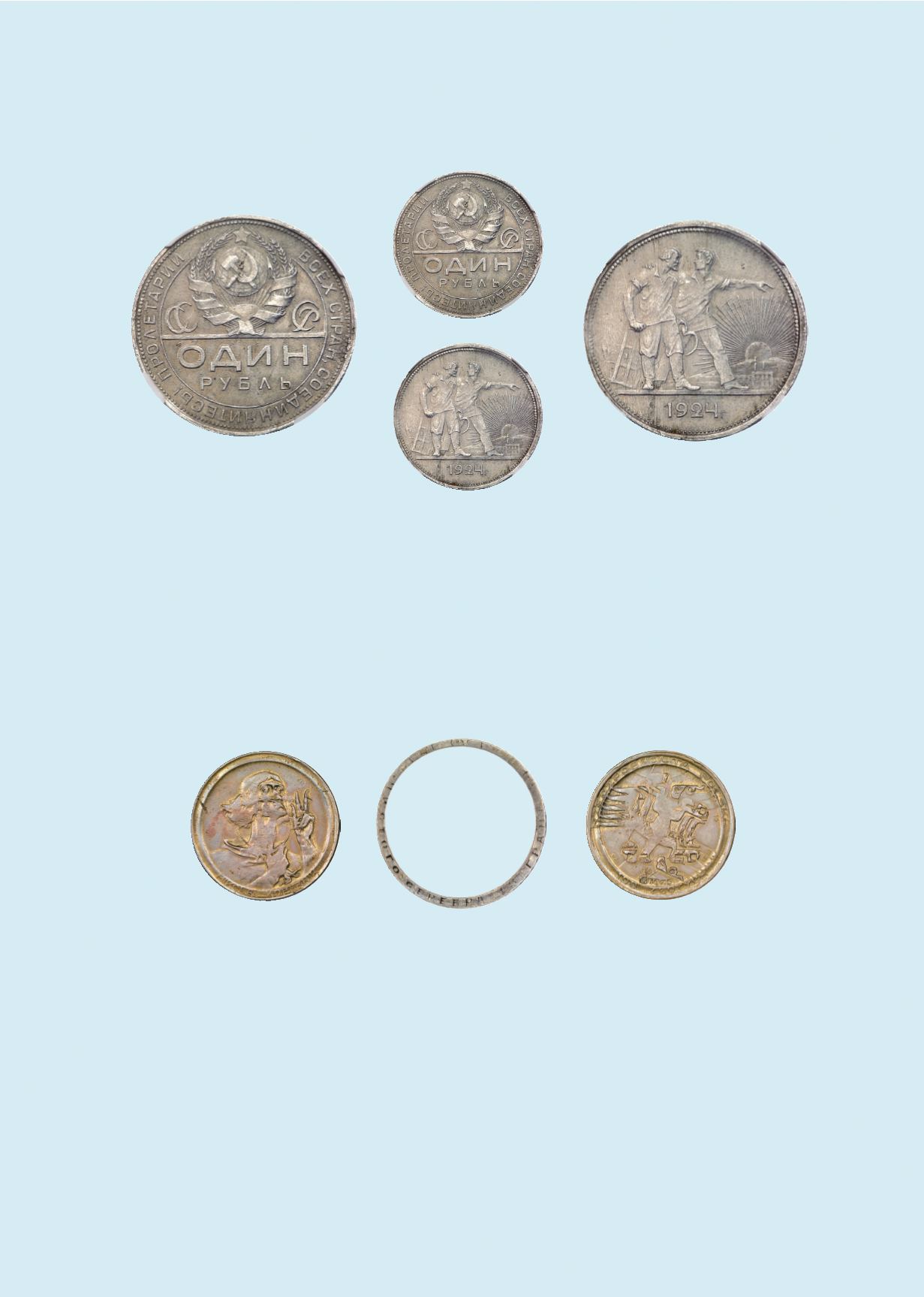

U.S.S.R.
to 1.5x
to 1.5x
2258 Al
2258
Pattern Rouble 1924. Aluminum. Plain edge. Kaim P 148, KM Pn176, Shel p.16.
Extremely rare
early Soviet Pattern. Authenticated and graded by NGC MS61. Pale
gray with lustre.
Uncirculated
$ 4,000
Ex Numismatica Genevensis V Sale, Dec. 2 &3, 2008, Geneva, lot 1246
Ex ”The New York Sale” XXXVI, New York, NY, January 8, 2015, lot 2398
Enigmatic Russian-Polish Pattern 100 Zlotych
2259
2259
Poland. Pattern 100 Zlotych 1925. Silver. 18.91 gm. Overstruck on a USSR 1
Rouble, 1924. Parch. P167d, Kop--. Modernistic Copernicus and Polish eagle
designs by Stanislaw Szukalski, who tried this unadopted pattern in a number of
metals and sizes. Host coin’s edge inscription clear: “ЧИСТАГО СЕРЕБРА 18
ГРАММ (4 з. 21 д.) П.Л”. The weight of a normal 1925 100 Zlotych Copernicus
Pattern of this size -- which would have used a fresh silver blank -- is 24.5 gm,
while the standard for a 1924 Soviet Rouble was 20.00 gm. Thus the host coin
here is 1 gram light – its surfaces may possibly have been mechanically smoothed
in order to receive the unusual design of the pattern. As to why a Soviet coin (or
any coin for that matter) would be used as a host on which to strike this Polish
pattern, this is an enigma. A possible explanation may lie in the designer Stanislaw
Szukalski, one of Poland’s most controversial artists, whose goal was to create a
new Polish art based on its mythology and history. Requires additional research.
Extremely rare
and unique as an overstrike on a Soviet coin. Authenticated and
graded by NGC MS61.
$ 10,000



















